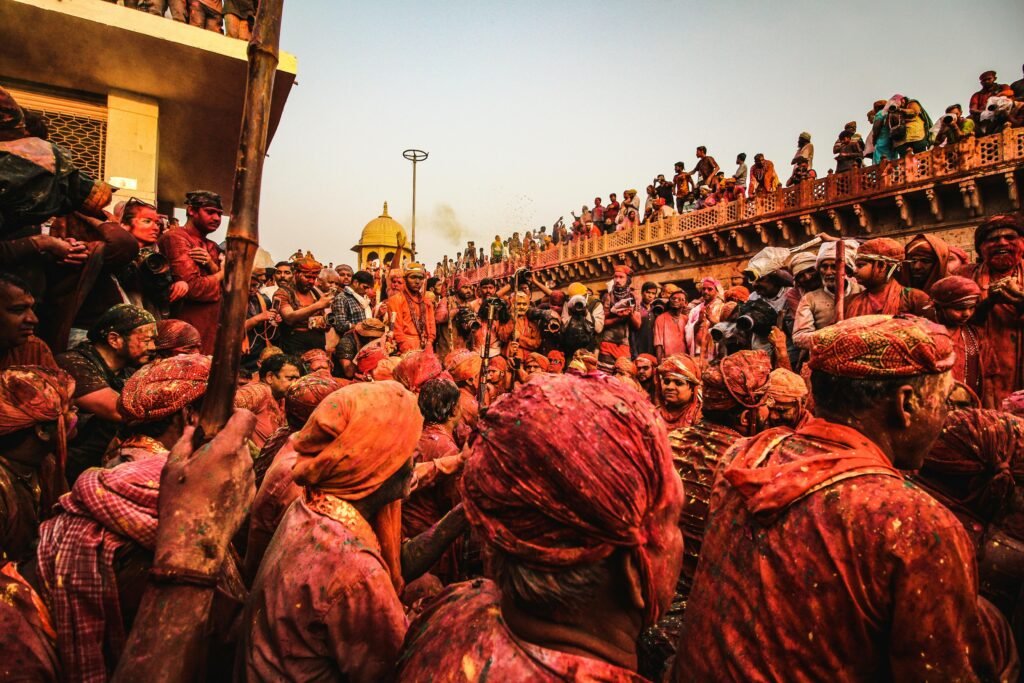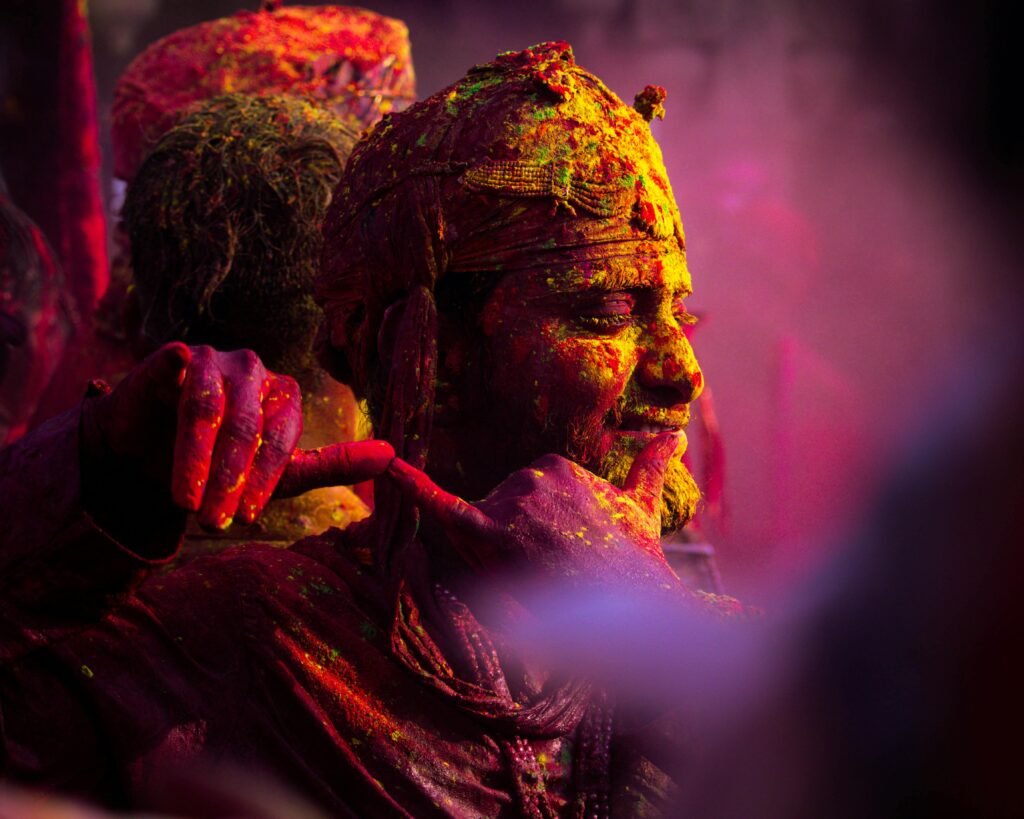
Introduction: Significance of Śhravaṇa for Shiva Yatras
— A Month of Devotion, Purity, and Spiritual Journeys
Shravaṇa month is one of the holiest times in the Hindu calendar, especially for Lord Shiva’s devotees. During this period, millions of people set out on Shiva yatras (spiritual pilgrimages) to temples across India.
Monsoon showers start pouring as Shravaṇa begins. These rains are seen as symbols of purification and divine cleansing. The Earth gets washed clean—just like your soul does when you chant “Om Namah Shivaya” during this sacred month.
Do you know why Mondays are special in Shravaṇa? Because they are believed to please Mahadev the most! You’ll often see devotees fasting or pouring water and milk over Shiva Lingams. This ritual is known as Abhishekam, and it represents love, surrender, and healing.
Here’s something fascinating—Shravaṇa connects to the Samudra Manthan legend, where Shiva drank poison (Halahala) to save the world. To cool him, devotees now offer water during Shravaṇa. Even the moon on his head symbolizes calmness during this intense time.
So if you’re looking for Shiva temples to visit during Shravan, now’s the time to plan your journey. The air is fresh, the hills are green, and your spirit is ready to rise. 🕉️✨
“Har Har Mahadev” echoes through the misty skies—join the chant, join the journey!
Why Divya Kripa App is Your Perfect Pilgrimage Companion
— Walk the Sacred Path with Technology on Your Side
Planning to explore Shiva temples to visit during Shravan? Make your journey smoother with the Divya Kripa App by your side. Whether you’re traveling alone or with your family, this app becomes your personal guide, priest, and storyteller!
“Stay updated with real-time darshan alerts, festival notifications, and temple lore.”
This means you never miss a powerful aarti or an auspicious muhurat during your Shravan yatras.
The app offers offline bhajan playlists, so you can hum soulful Shiva stotras even in remote areas. Remember how Lord Shiva is pleased by sincere devotion? These bhajans set the mood perfectly.
Want to know why a temple is named so? The app provides historical context and mythological tales for each temple. Now you don’t just visit—you understand!
For trekking to hilltop temples like Tapkeshwar or Lakhamandal, use the trek maps and weather alerts. Get rain updates during monsoon so your yatra stays safe and blessed.
If you’re shortlisting lesser-known Mahadev temples, Divya Kripa filters them by region, accessibility, and rituals.
So, don’t just travel—transform your journey. Let Divya Kripa connect your devotion with divine destinations, one temple at a time. 🕉️📲
How We Chose These Temples
— Handpicked with Devotion, Research & Divine Guidance
When we set out to create this list of Shiva temples to visit during Shravan, we had one goal—help you discover sacred gems beyond the popular Jyotirlingas. These temples had to be spiritually powerful, yet hidden from the touristy buzz.
We began by scanning temples across Rajasthan, Gujarat, Madhya Pradesh, Himachal Pradesh, Uttar Pradesh, and Uttarakhand—states with rich Shaiva traditions and monsoon accessibility.
Each temple was chosen for a reason. Some have ancient rock carvings, others carry untold legends—like Shiva drinking poison or granting boons to great sages. These temples aren’t just structures—they’re stories carved in stone.
We used credible historical sources, spiritual texts, and community reviews. But the secret ingredient? The DivyaKripa app’s detailed temple descriptions, which helped us verify rituals, special Shravan events, and crowd levels.
We made sure every temple on this list is accessible during Shravana monsoon—because no one should miss darshan due to slippery paths or blocked roads.
So whether you’re a Kanwariya, a weekend yatri, or a spiritual explorer—this list is your divine map. Ready to uncover lesser-known Shiva temples that sing with mystic energy this Shravan? Let’s begin. 🙏🌧️🕉️
Spotlight: 7 Hidden Shiva Temples to Visit During Shravan
🕉️ A. Jatashankar Cave Temple – Pachmarhi, Madhya Pradesh
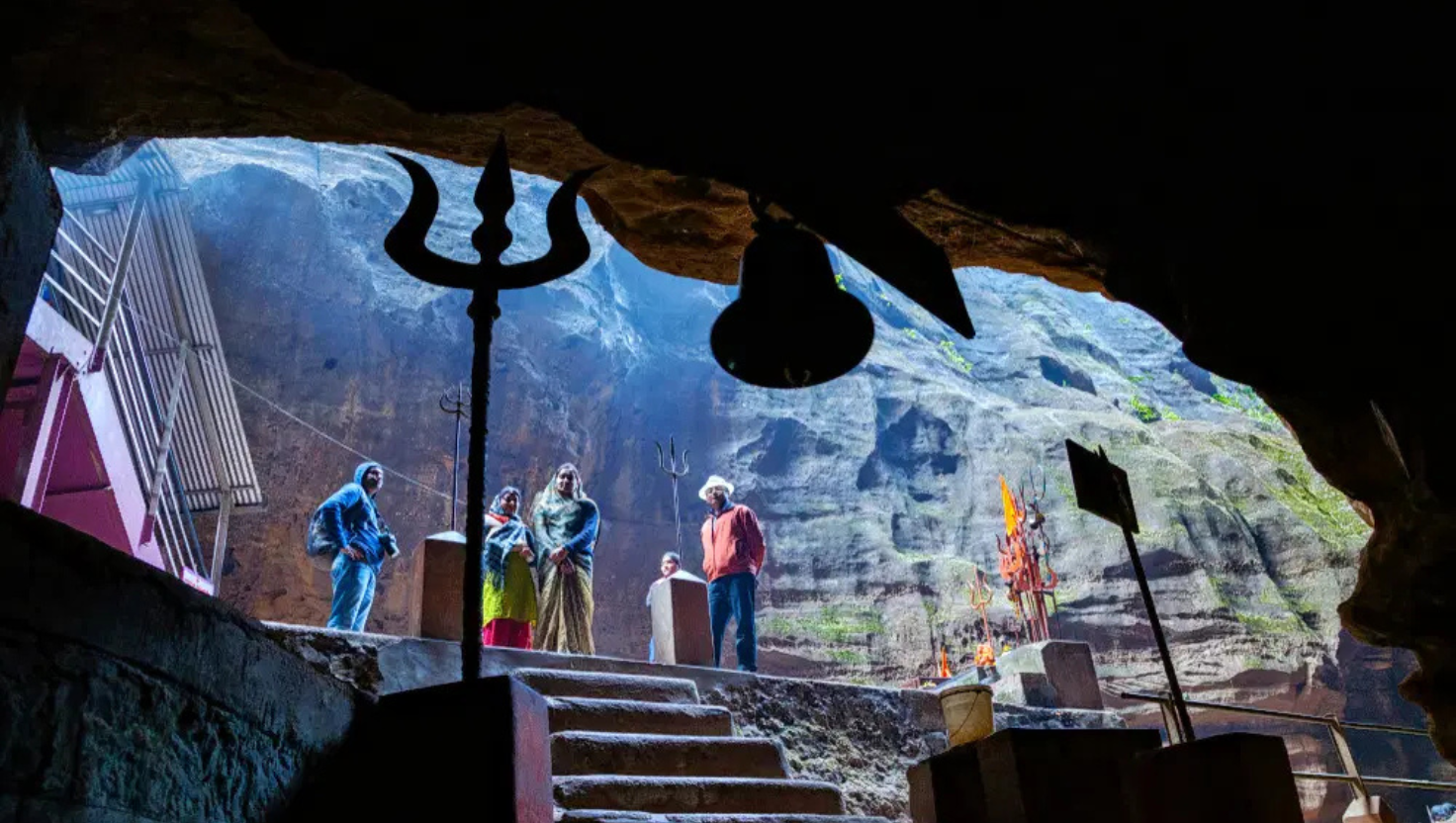
Looking for Shiva temples to visit during Shravan that feel magical and untouched? Head to Jatashankar Cave Temple in Pachmarhi.
This sacred site is tucked deep inside a natural cave in the Satpura hills. Inside, you’ll find 108 naturally formed Shiva lingams, believed to have emerged on their own—called Swayambhu. The atmosphere here is calm, cool, and perfect for quiet reflection during Shravan.
Legend says Lord Shiva hid in this cave to escape the demon Bhasmasura, who had received a destructive boon from Mahadev himself. When the demon tried to use the power against Shiva, the Lord sought refuge here. That’s why this place is considered a divine Sharan Sthal (place of shelter).
A stream flows through the cave, forming a natural cold-water spring where devotees often bathe. It’s believed this water has healing and purifying powers. During the monsoon month of Shravan, mist rolls in and the temple looks like a living painting.
You’ll find this temple peaceful and deeply spiritual—far from crowds. So if you’re listing hidden Shiva temples for Shravan, don’t miss this ancient and naturally sacred gem in Madhya Pradesh. Har Har Mahadev! 🕉️
👁️ B. Trineteshwar Temple – Tarnetar, Gujarat
Looking for sacred Shiva temples to visit during Shravan? Try the ancient Trineteshwar Temple in Tarnetar.
This 8th-century marvel features classic Gurjar-Pratihara architecture, built by Mihira Bhoj . Inside, you’ll see a rare three-eyed Shiva idol, representing his cosmic vision. Locals say he opened his third eye here to burn the god of love, Kamadeva, with divine fire.
During Shravan, the temple grounds come alive with the famous Tarnetar Fair . Folk music and dance echo all day. Colorful umbrellas and tribal costumes bring festive energy. It’s a spiritual fair with playful crowds and devotional faith.
Devotees take ritual dips in the temple kunds, believed as holy as bathing in the Ganges . These Kunds, named after Shiva, Vishnu and Brahma, cleanse your sins in one bath.
You’ll feel ancient energy, folk culture, and divine devotion in every step. For those mapping out lesser-known Shiva temples to visit during Shravan, this temple in Gujarat promises both religious depth and cultural joy. Har Har Mahadev! 🙏
🗻 C. Panchvaktra Temple – Mandi, Himachal Pradesh
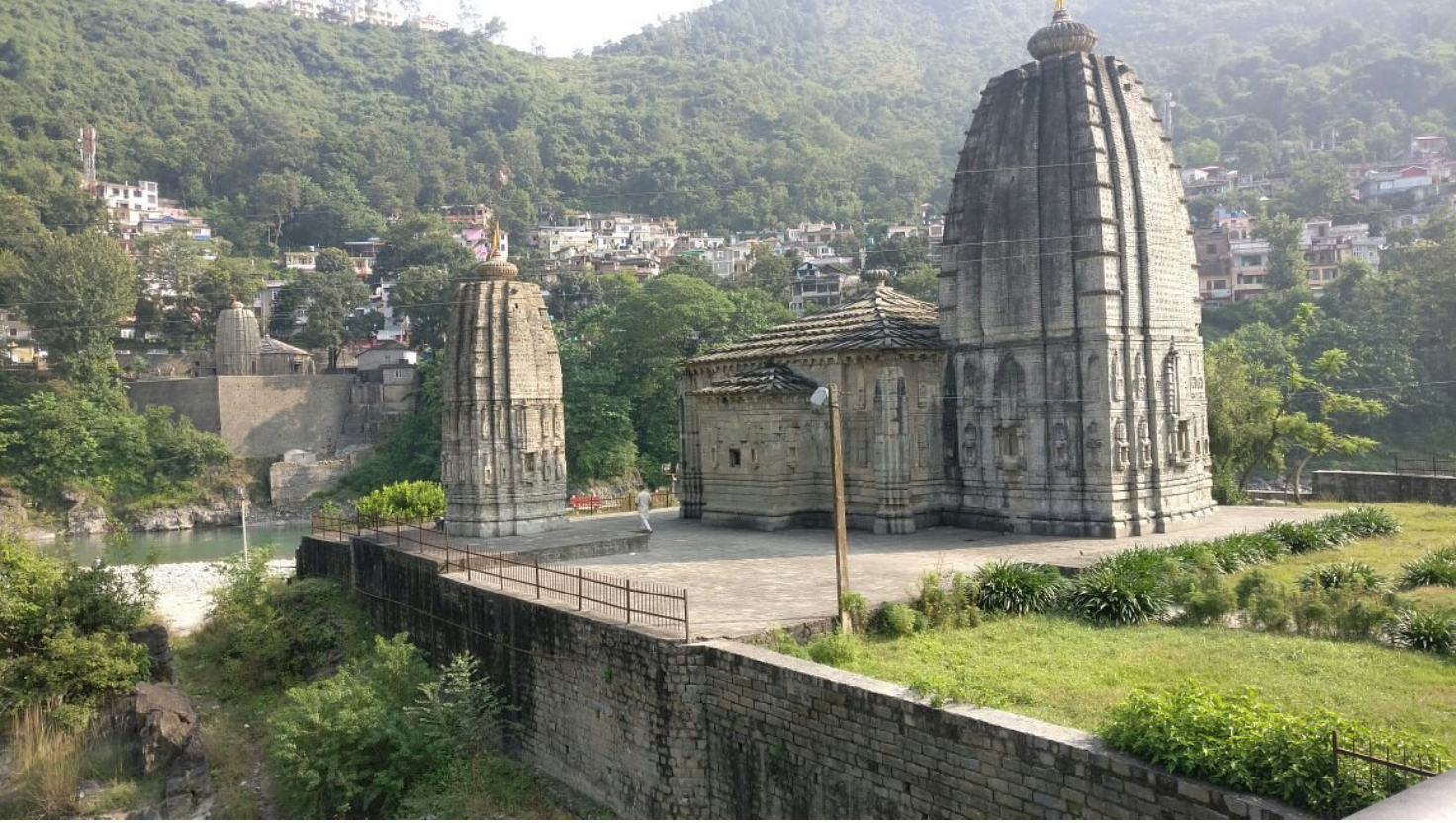
If you’re searching for peaceful Shiva temples to visit during Shravan, Panchvaktra Temple in Mandi is a perfect choice. This temple, over 600 years old, stands at the sacred confluence of two rivers, the Beas and the Suketi. Its unique feature? It houses a rare Panchmukhi (five-faced) Shiva idol, symbolizing Shiva’s all-seeing and protective nature.
Visiting during Shravan means you’ll experience a calm, remote spot away from crowded pilgrimage centers. The temple’s riverside setting offers fresh mountain air, the soothing sound of flowing water, and a chance to connect deeply with nature and spirituality.
Local legend says the five faces represent Shiva’s power to create, preserve, destroy, conceal, and reveal. During Shravan Mondays, devotees gather here for special prayers and offer Bilva leaves to seek blessings.
Panchvaktra’s tranquil beauty and powerful aura make it an ideal destination for those wanting to escape city noise and embrace heartfelt devotion. This lesser-known temple in Himachal Pradesh is truly a hidden gem on your Shravan Shiva temples to visit list. Har Har Mahadev!
🕮 D. Eklingji Mahadev Temple – Udaipur, Rajasthan
When exploring Shiva temples to visit during Shravan, don’t miss the majestic Eklingji Mahadev Temple near Udaipur. Located in the village of Kailashpuri, just 22 km from the city, this temple is not only spiritually powerful but also architecturally stunning.
Built in the 8th century by Bappa Rawal, the founder of the Mewar dynasty, the temple is dedicated to Eklingji, a four-faced idol of Lord Shiva carved in black marble. Each face represents a different form of Shiva—peaceful, fierce, meditative, and protective. The deity here is worshipped as the ruling guardian of Mewar, not just by kings but by the people too.
During Shravan month, the temple is beautifully decorated with lamps and flowers. Devotees from across Rajasthan come to offer milk, water, and Bilva leaves to seek divine blessings.
It’s said that the Mewar rulers considered themselves servants of Eklingji and ruled as his representatives. The temple’s inner sanctum, serene courtyards, and rhythmic chants create a divine aura.
If you’re crafting a travel plan of hidden Shiva temples for Shravan, Eklingji is a must-visit. It blends faith, history, and royal devotion. Har Har Mahadev! 🙏
🔱E. Bhuteshwar Mahadev Temple, Mathura – Where Krishna’s Faith Met Shiva’s Grace
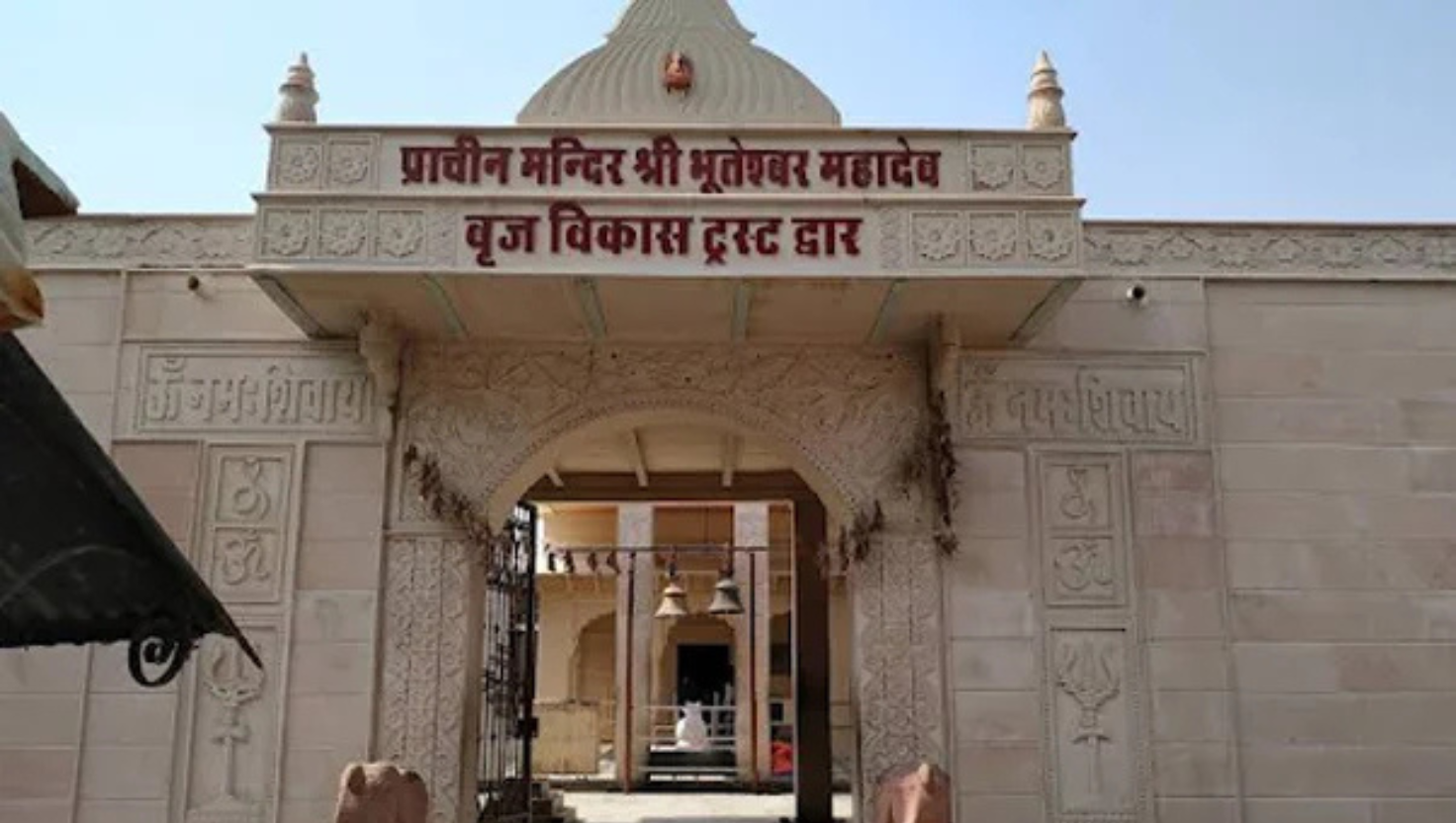
Among the Shiva temples to visit during Shravan, Bhuteshwar Mahadev Temple in Mathura holds a deeply sacred aura. It is one of the ancient temples where Lord Krishna and the Pandavas are believed to have worshipped Lord Shiva before the great war of Mahabharata.
Situated in Krishna’s own birthplace, this temple is one of the key Shaiva sites in Braj Bhoomi. According to local belief, Bhuteshwar Mahadev is one of the guardians of Mathura, protecting the city from negative energies. The Shivling here is self-manifested (Swayambhu) and radiates divine power.
During Shravan month, the temple becomes a lively hub of devotion. You’ll see long lines of devotees offering water, milk, and Bilva leaves to the ancient lingam. Mondays in Shravan are especially important, with early morning aartis and special abhisheks.
The spiritual energy is amplified by chanting, bells, and incense, creating a magical experience. Visiting Bhuteshwar connects you to both Vaishnav and Shaiva traditions, a rare blend of devotion.
If you’re mapping out hidden Shiva temples for Shravan, this divine gem from Mathura truly deserves a place on your list. Har Har Mahadev! 🕉️. For detailed information on Bhuteshwar Mahadev Temple, Read our blog.
🌄 F. Lakhamandal Mahadev Temple – Dehradun, Uttarakhand
If you’re looking for Shiva temples to visit during Shravan that feel steeped in epic tales, Lakhamandal Mahadev is a mystical stop.
Nestled in the Jaunsar-Bawar region of Dehradun district, this ancient temple is linked to the Pandavas and the Mahabharata. It’s believed that during their exile, the Pandavas built this temple and tried to escape a deadly fire trap set by Duryodhana nearby.
The most fascinating feature here? The Shivling is believed to rise naturally from the earth. Made of shining graphite, the lingam reflects light when water is poured on it—an awe-inspiring sight during Shravan rituals.
Locals share tales of hidden tunnels and secret chambers, believed to have been built by the Pandavas themselves. You’ll also find twin statues at the entrance that are said to bring the dead back to life if touched—a belief rooted in old village lore.
During Shravan month, devotees travel through winding forest roads to reach this serene site. The quiet hills, cool breeze, and sacred legends create a divine atmosphere.
Lakhamandal is truly one of the hidden Shiva temples for Shravan that blends mystery, mythology, and nature’s calm. Har Har Mahadev! 🙏
⛰️ G. Baijnath Shiva Temple – Kangra, Himachal Pradesh
Among the many Shiva temples to visit during Shravan, the Baijnath Temple in Himachal Pradesh is steeped in powerful mythology and devotion. Built in 1204 AD by two local merchants, this temple in Kangra district is dedicated to Lord Shiva as Vaidyanath, the Lord of Healing.
But here’s what makes it truly fascinating—local legends say Ravana himself worshipped Shiva here to gain his ultimate boon. It’s believed Ravana offered his ten heads one by one to impress Shiva, and pleased by this extreme devotion, Shiva blessed him here with immense power.
Set against the backdrop of the Dhauladhar mountains, the temple’s Nagara-style architecture is a treat for heritage lovers. You’ll find beautiful carvings, a peaceful courtyard, and a spiritually charged aura that grows stronger during Shravan month.
Devotees visit in large numbers during this time to offer milk, Bilva leaves, and prayers. Many believe that Shiva’s presence here is especially healing—physically and emotionally.
If you’re creating a journey of hidden Shiva temples for Shravan, Baijnath should be high on your list. It’s a place where legends breathe and devotion flows. Har Har Mahadev! 🌿
Bonus: Sthaneshwar Mahadev Temple – Kurukshetra, Haryana
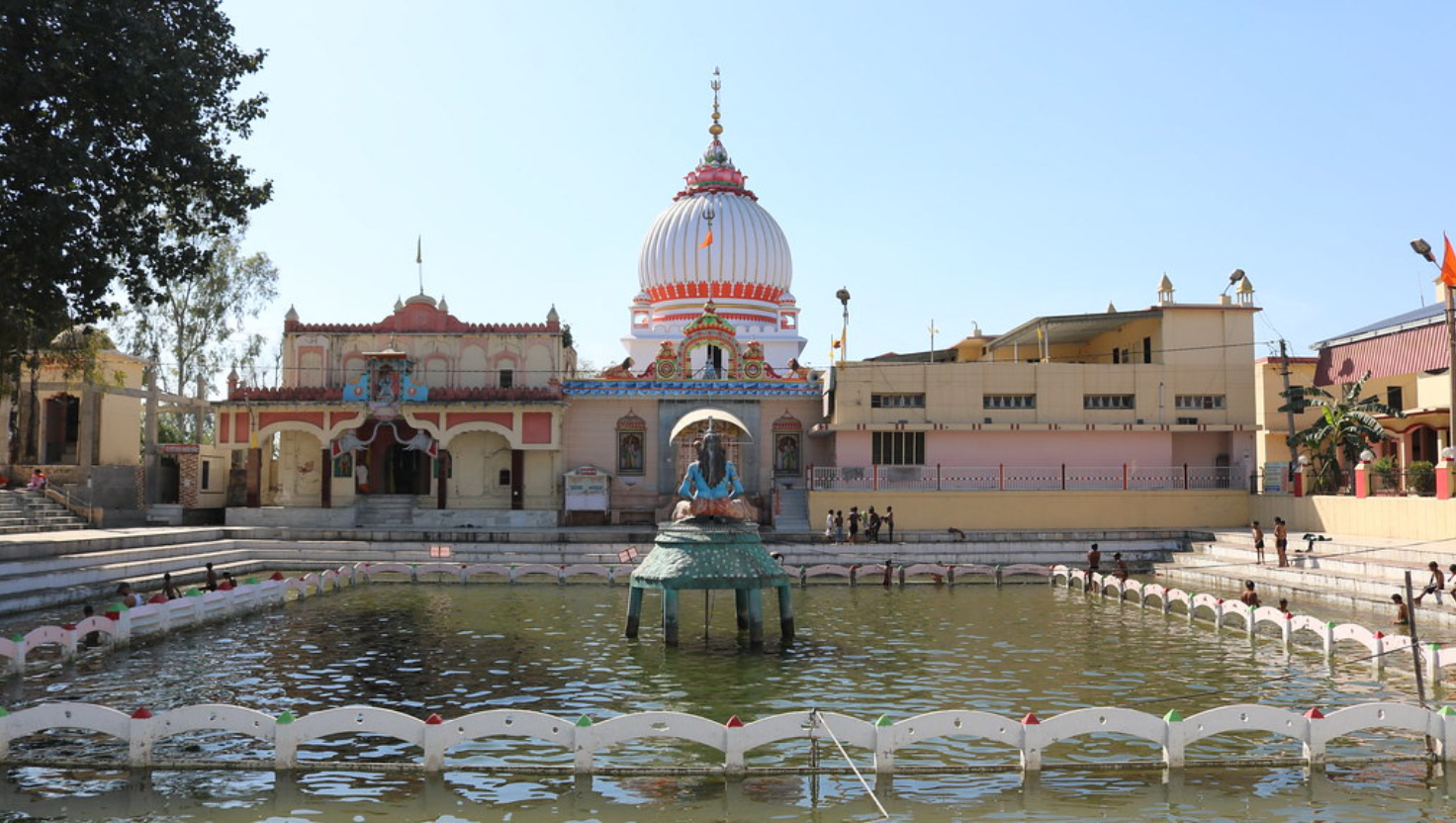
One of the most spiritually charged Shiva temples to visit during Shravan is the Sthaneshwar Mahadev Temple in Kurukshetra, Haryana. This ancient temple is deeply rooted in the Mahabharata era and holds stories that still echo in the hearts of devotees.
According to legend, before the epic war of Mahabharata began, Lord Krishna and the Pandavas prayed to Lord Shiva at this very temple. They sought strength, clarity, and divine guidance to face the great battle ahead. Locals believe Shiva blessed them with courage and righteousness, which ultimately helped them in their victory.
The temple’s name, “Sthaneshwar,” means “The Lord of the Place,” and it’s believed that this was once the capital of King Harshavardhana in ancient times. The Shivling here is said to be self-manifested (Swayambhu), radiating peaceful energy, especially during Shravan month.
During Shravan, the temple sees a beautiful blend of rituals, prayers, and serene devotional music. Pilgrims come to offer water, milk, and Bilva leaves, seeking blessings for inner strength and peace.
Add this historic gem to your list of hidden Shiva temples for Shravan and feel the divine power that once guided warriors and kings. Har Har Mahadev! ✨
✨ Closing Thoughts
Each of these Shiva temples to visit during Shravan offers a unique spiritual experience. They blend legends, architecture, and monsoon charm in a way big Jyotirlingas often can’t. Plus, with Divya Kripa guiding your darshan windows, trek paths, and rituals, you can explore confidently—even off the beaten track.
Ready to add one of these hidden Mahadev shrines to your Shravan yatra list? Let the rain-filled skies, sacred waters, and age-old chants lead your steps. Har Har Mahadev! 🙏
Shravana Travel Tips: Make Your Shiva Pilgrimage Safe and Blissful
Visiting Shiva temples to visit during Shravan calls for some smart preparation. The monsoon rains bless the earth but also make travel tricky. So, pack waterproof gear—think raincoats, umbrellas, and waterproof bags—to keep yourself and your belongings dry. Proper trekking shoes are a must, especially if you plan to visit hilltop temples or caves like Jatashankar or Lakhamandal. Slippery paths are common, so sturdy shoes will keep you steady and safe.
Spiritually, Shravan is special for early morning visits, especially on Mondays—the day dedicated to Lord Shiva. Waking up at dawn and visiting temples brings added blessings. There’s a popular belief that Shiva himself wakes early to receive his devotees. So, catching the morning aarti in the calm mist of Shravan is magical and rejuvenating.
For the best experience, use the Divya Kripa app during your pilgrimage. It gives you real-time weather and tide alerts, so you avoid sudden downpours or river floods. The app’s bhajan playlists keep you spiritually connected on the go. Plus, heritage updates help you learn fascinating temple stories, enriching your journey.
Remember, a well-prepared traveler is a joyful devotee. Let your Shravan yatras be safe, serene, and soulful!
Conclusion & Call to Action
This Shravan, why not explore some of the serene, lesser-known Shiva temples to visit during Shravan? Each temple has its own unique story and spiritual energy waiting for you. Whether you seek the misty caves of Pachmarhi or the ancient stone carvings of Rajasthan, these sacred places offer peace, devotion, and a deeper connection to Lord Shiva.
Don’t forget to download the DivyaKripa app before you set out. It gives you darshan alerts, detailed trek maps, and soothing devotional bhajans to keep your spirits high on the journey. Just like how the moon’s glow during Shravan symbolizes calmness, the app guides you gently through your pilgrimage.
Legend says that those who worship Shiva with devotion during Shravan receive his blessings for health, happiness, and spiritual growth. So, pack your bags with faith and enthusiasm. Share with us which temple you plan to visit or tell us about your Shravana pilgrimage experiences in the comments below. Your story might inspire someone else to start their divine journey!
Har Har Mahadev!

